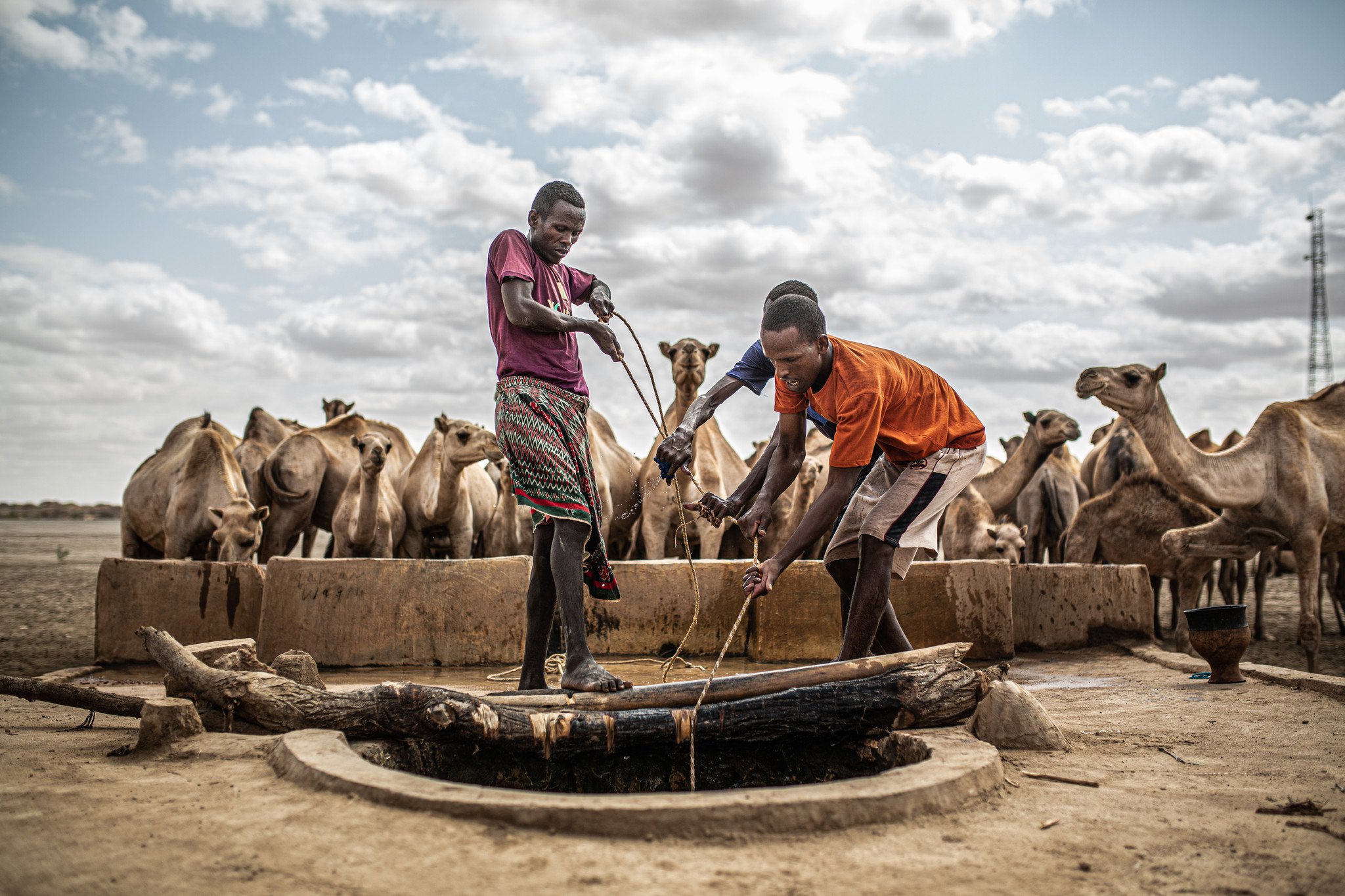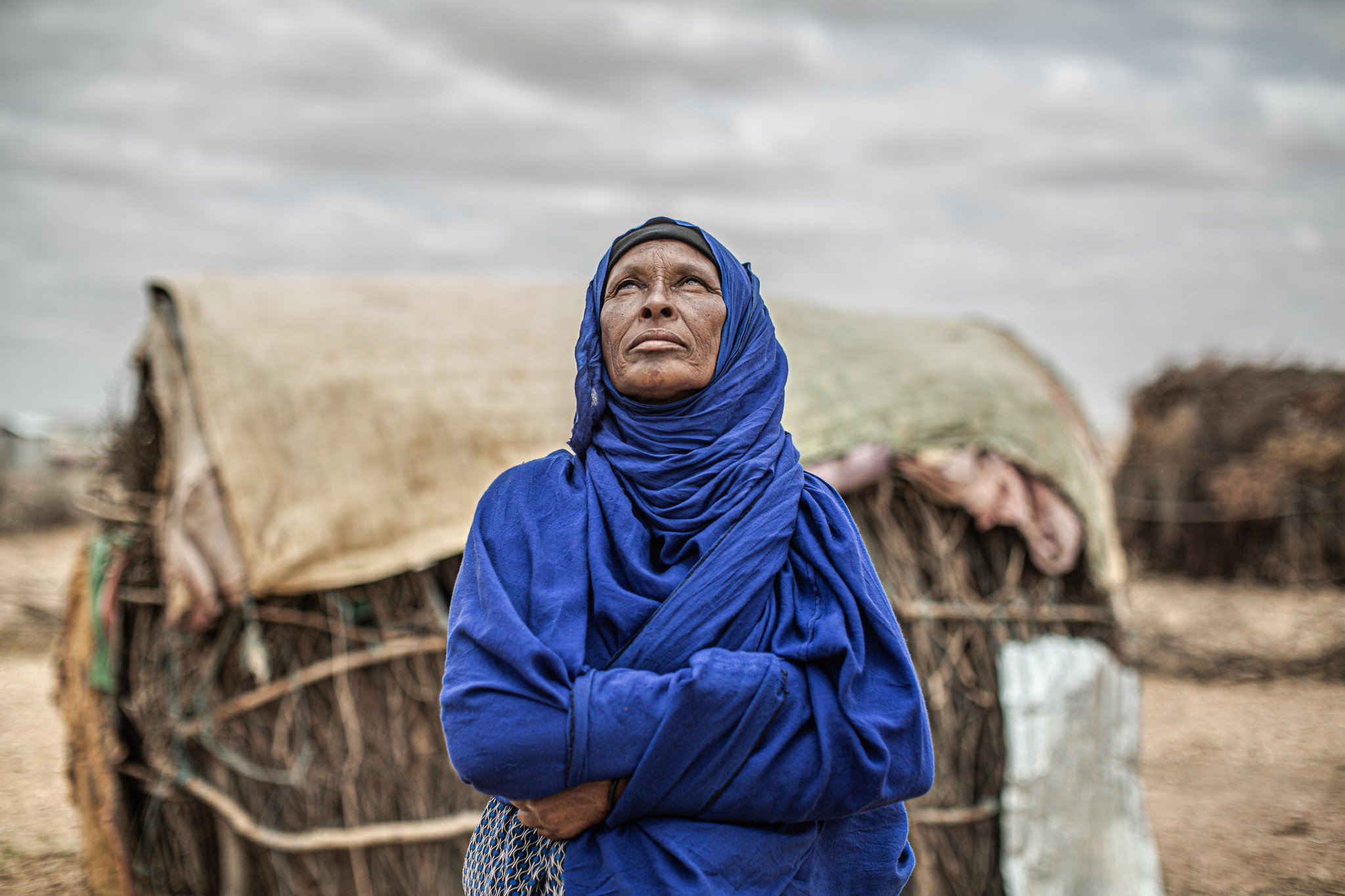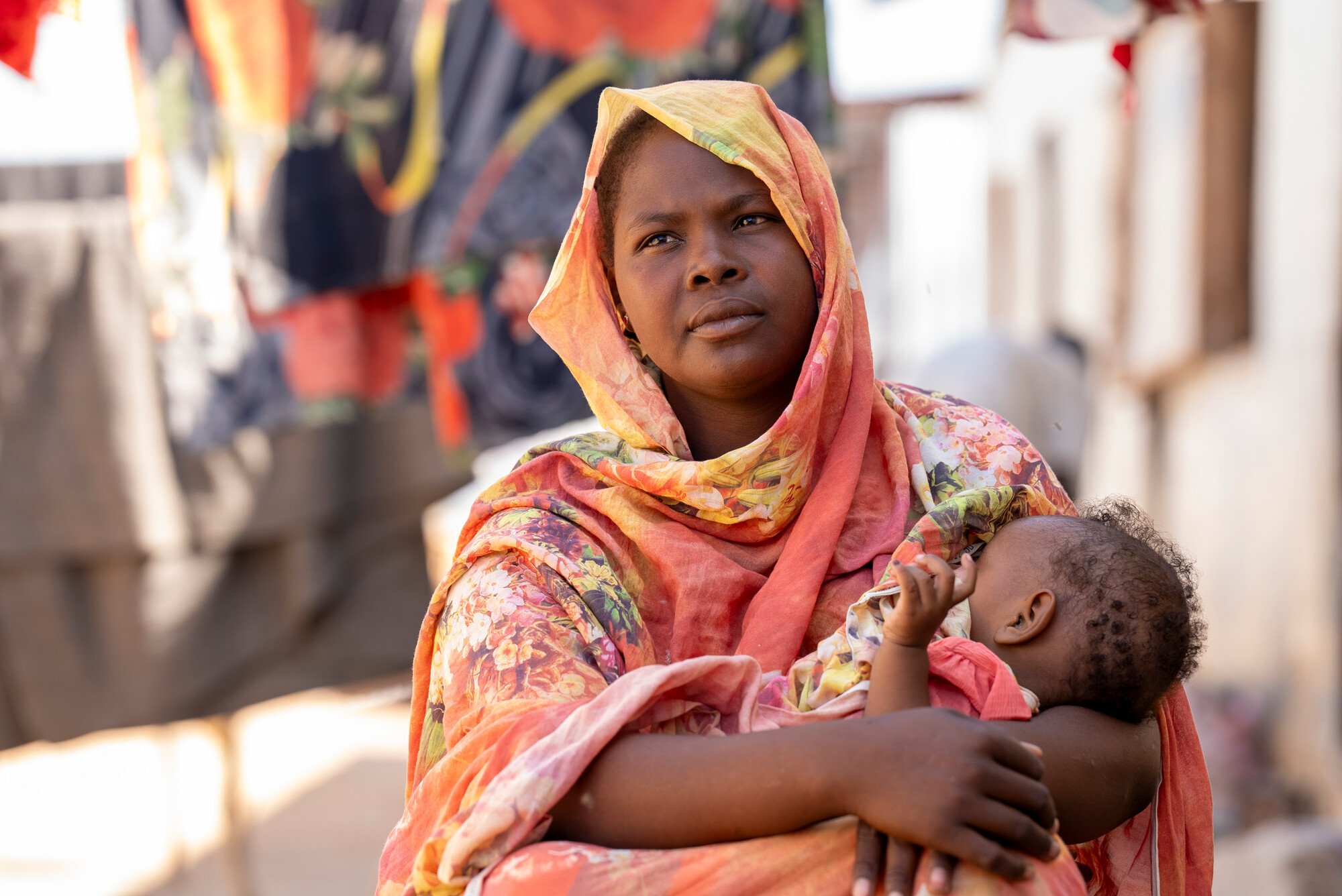People living in persistent dry conditions struggle to keep their livestock and families alive.
Next to the Jarar river is a broad, dusty plane that today is full of camels, hundreds of them. Abdi Abdulahi brought what remains of his camel herd here in search of water, about 30 kilometers from his home in Ethiopia’s Somali Region.
“I used to have 300 sheep, goats, and camels. Now I have about 25 camels,” he says, standing next to a well where several of his sons are drawing buckets of water and filling a concrete trough. Camels crowd the trough and drink, eyeing the people around them suspiciously. Many of them have sharply protruding rear thigh bones, an indication of poor health. Strong gusts of wind whip clouds of dust across the plain.
“We sell animals to buy food and clothing. We only have this herd,” Abdulahi explains. “I only know camels. I have no other skills.” Faced with an ongoing drought, Abdulahi has no plan for what he will do if he loses his remaining animals. “When I lose the rest of my camels, I will worry about what to do then.”

Abdulahi and many other pastoralist families in the Horn of Africa are enduring a severe drought right now, and experts are concerned it will be as bad as 2011 — when a quarter million people died in famine in nearby areas of Somalia, eastern Ethiopia, and northern Kenya.
The global response to the 2011 drought was delayed, so when dry conditions in these areas reappeared in 2017, governments and humanitarian organizations responded more aggressively and averted a full-on famine. With more drought conditions coming so quickly after the last drought, Oxfam and other organizations are now concerned that there are not enough funds committed to help the 15.3 million people across the region who require humanitarian assistance.
Displaced by drought
As of July 2019, humanitarian organizations estimated there are three million internally displaced people in Ethiopia alone. Many of the pastoralist families are in the worst-case scenario Abdulahi fears: They have lost all their animals.
Amina Ibrahim, 50, is the head of one such family. She and her 12 children fled their home in Qararo in 2017 after their animals died and an outbreak of water-borne diarrheal disease (most likely cholera) started killing people. Ibrahim says this was the most terrifying thing she has ever endured. “I thought I would die also. Thanks to God, we are still alive.”
Since then they have been living in a makeshift shelter in Gunagado, where Oxfam, other organizations, and the Ethiopian government have been helping her with clean water, food, latrines, occasional cash, and hygiene items such as soap. Oxfam also supplied plastic sheets people have used to create shelters.
Before the 2017 drought, Ibrahim says she had 150 sheep and goats and 16 camels. “We raised animals, sold them to buy what we needed; we had water … nothing was missing back then. We had what we needed.”

To help pastoralist families here in Jarar, Oxfam carried out an animal vaccination campaign in August and is providing people like Ibrahim and her family with cash, water, latrines, and hygiene support that will help prevent more outbreaks of disease.
“I am starting to recover from the drought,” Ibrahim says optimistically. She hopes that with some business training and other support, she and others here can rebuild their lives.
When Ibrahim thinks about the changes in the climate she has seen since she was a girl, she says, “The rains are less and less …. I have no idea what is behind this, but I can tell you that there is a lack of rainfall and there is hotter and hotter weather.”
There are more than 600 displaced families like Ibrahim’s in Gunagado right now. Few of them have any work or income, and they live on minimal water and food aid. Ibrahim hopes that “we can live near this place so our children can go to school, and make a new life here.” She thinks that at some point she can become a livestock dealer but also engage in trading in other goods.
More dry weather is not helping families rebuild livestock herds in this part of Ethiopia, according to Elias Kabede, Oxfam’s program manager here. “People suffering from the 2017 drought have not seen much improvement,” he says. “There has not been enough time to recover, and now this additional drought has affected them badly.”




